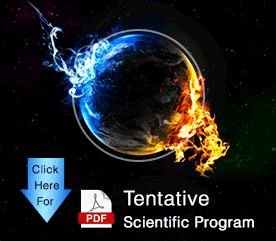Young Sun Mok
Jeju National University, South Korea
Title: Plasma-catalytic dry reforming of butane for syngas production over highly effective Ni supported catalyst
Biography
Biography: Young Sun Mok
Abstract
In this work, plasma-catalytic dry reforming of butane (C4H10) was performed to produce synthesis gas (a mixture of CO and H2) over Ni/alumina catalyst. In the dry reforming, carbon dioxide (CO2), which is a global warming gas, is used as a reactant and thus this process has attracted attention as an environmental friendly process. The catalyst (Ni) was supported on an alumina using an impregnation method in an amount of 2-10 wt%. Plasma was used for two purposes; one is the reduction of the catalyst and the other is the promotion of the dry reforming reaction. For the promotion of the dry reforming reaction, plasma was created in the catalyst-packed bed by an alternating current (AC) high voltage (operating frequency: 1 kHz). During the catalyst preparation, thermal and plasma-assisted calcination and reduction processes were used to produce catalysts with optimal reactivity. The catalytic activity for the dry reforming was evaluated by controlling the molar ratio of C4H10/CO2 from 1:2 to 1:5 at temperatures of 500- 600 °C. The changes in the catalytic properties before and after the dry reforming reaction were observed using XPS, XRD, TEM, BET, FESEM, temperature programmed reduction (H2-TPR), Raman spectroscopy and temperature programmed oxidation (TPO). According to the experimental results, the plasma-reduced catalyst exhibited better catalytic performance for the production of H2 than the thermally reduced catalyst because the nickel particles were finely dispersed on the surface of the alumina support by plasma, resulting in a wider surface area (or more active sites). In addition, when plasma was used during the dry reforming reaction, the butane conversion efficiency was 30-50% higher than that of the catalyst alone. This result can be attributed to the thermal effect and the activation of the catalyst by the plasma.

